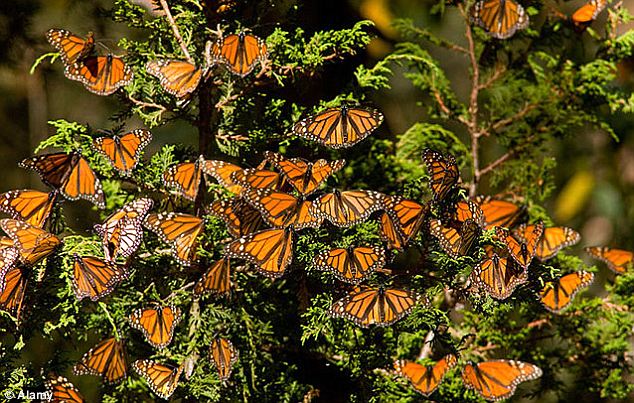
Millions of monarch butterflies, pictured, migrate 2,000 miles every year. In 1976, zoologists found them at the top of the ‘Mountain of Butterflies’ in Mexico. While scientists know the monarchs target 12 to 15 Mexican mountain sites, they don’t know how they navigate there
Each year, millions of North American monarch butterflies migrate 2,000 miles south for winter. For years, no one knew where they ended up. Then, in the 1950s, Norah Urquhart and her husband Fred, a zoologist, began tagging and tracking the creatures. In 1976, tipped off by a local woodcutter, they climbed to the top of the ‘Mountain of Butterflies’. All the butterflies in North America, it seemed, were in a mountain forest in Mexico.
That’s not where the story ends. While we know the monarchs target just 12 to 15 Mexican mountain sites, we don’t know how they navigate there. Studies suggest they use the position of the Sun to fly south, adjusting for the time of day through circadian clocks in their antennae. But the Sun only gives them a general direction. What guides them towards the Michoacan mountains? ‘They are funnelled in, probably by landmarks as they reach the overwintering site,’ said Professor Steven Reppert, a monarch expert at the University of Massachusetts. ‘But how they home in is still a mystery.’
Landmarks such as the Gulf of Mexico couldn’t provide enough information to take butterflies all the way, so they must use other short-range navigation systems. One theory is that a geomagnetic force attracts them, although, says Reppert, ‘that’s never really panned out’. Scientists only recently acquired some of the genetic tools needed to probe the details of their navigation systems. Now they have a full genetic code, they are starting to knock out genes to see how this affects the animals’ sense of direction.
No comments:
Post a Comment